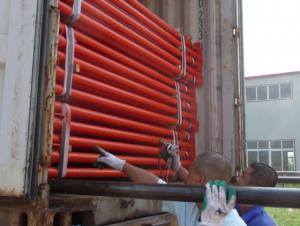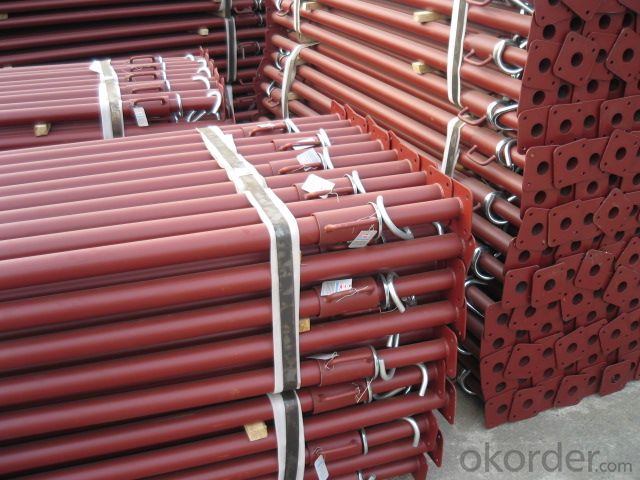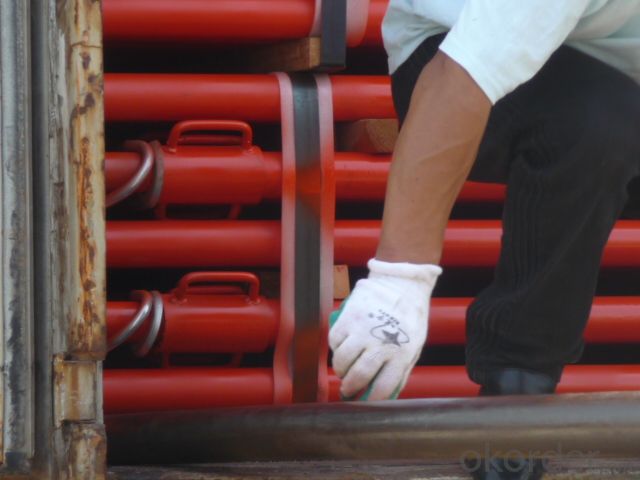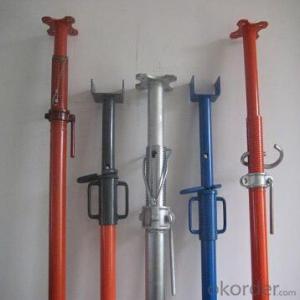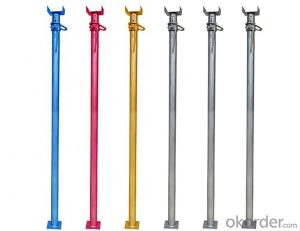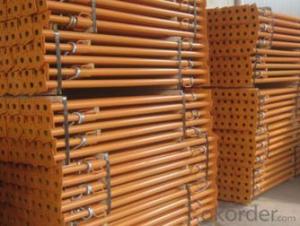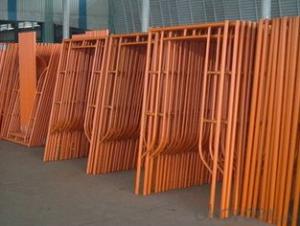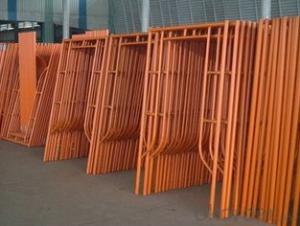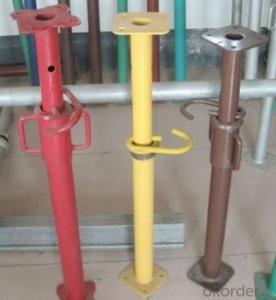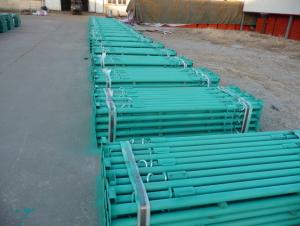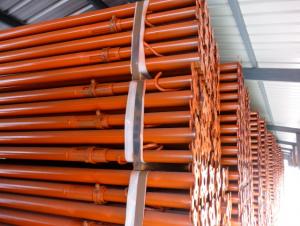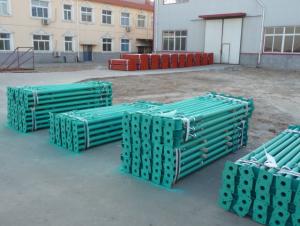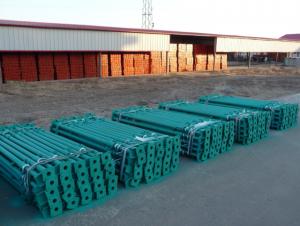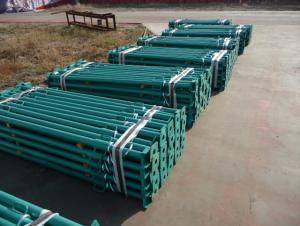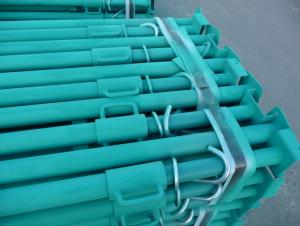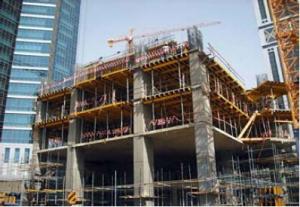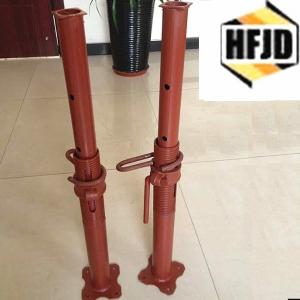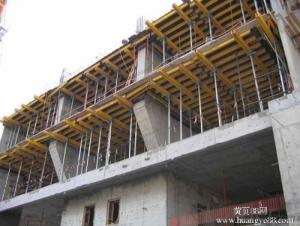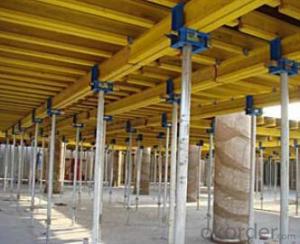Frame Scaffolding System, H-frame Scaffolding System ,H frame scaffolding
- Loading Port:
- China Main Port
- Payment Terms:
- TT or LC
- Min Order Qty:
- 1000 Set/Sets pc
- Supply Capability:
- 10000 pc/month
OKorder Service Pledge
OKorder Financial Service
You Might Also Like
Quick Details
Place of Origin: Tianjin, China (Mainland)
- Model Number: SD1700/1930CGSP
Place of Origin: China (Mainland)
Type: Scaffolding Parts
Scaffolding Part Type: Scaffolding Props
Color: blue/green/red/brown
Height: 1700/1930mm
Steel Pipe Size: 25/42
Coated: Painted;Pre-Galvanized; Electro Galvanized
Material grade: Q195-Q235
Package: Bundles or in Bulk
Certification: ISO9001:2008
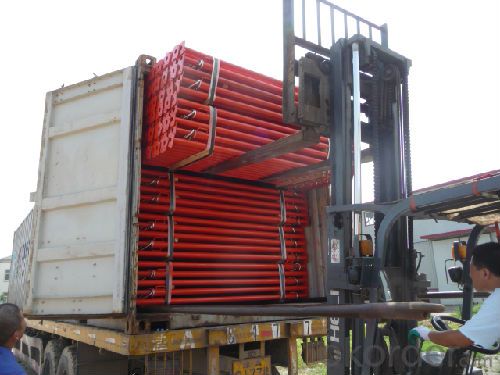
Packaging & Delivery
| Packaging Details: | 1- Frame scaffolding system is packed in bundle and wrapped with iron bar . 2- Usually , one 40HQ container can load 300-600 set of props , |
|---|---|
| Delivery Detail: | 40days |
Specifications
Frame scaffolding system is easy to assemble and dismantle which can help to save your time , energy and cost .
Product Description
h-frame scaffolding system
A- An adjustable steel prop including inner tube, Outer tube , prop nut ,prop pin , base plate and top plate
B- Adjustable steel prop can be adjusted to any length within its range which is convenient for using
C- Adjustable steel prop is easy to assemble and dismantle which can help to save your time , energy and cost .
D-We have several kinds of adjustable steel prop which are Middle East type adjustable steel prop , Spanish adjustable steel prop ,and Italian type adjustable steel prop . They are popular in Africa , South America , Middle east etc.
E-Adjustable steel prop is for supporting concrete slab , beam , timber and formwork which is strong and reliable for interior building construction .
F- we can weld the flat plate or the flower plate, or U-head plate , or fork plate at the top of the adjustable steel prop as your request .
h-frame scaffolding system
- Q: What is the typical warranty period for steel props?
- The typical warranty period for steel props can vary, but it is generally around 1 to 5 years, depending on the manufacturer and the specific product.
- Q: Are there any safety precautions that need to be taken when using steel props?
- Yes, there are several safety precautions that need to be taken when using steel props. 1. Inspection: Before using steel props, it is important to inspect them thoroughly for any signs of damage or wear. This includes checking for cracks, bends, or any other defects that may compromise their structural integrity. Any damaged props should be immediately removed from service and replaced. 2. Proper installation: Steel props should be installed correctly to ensure their stability and safety. This involves positioning them on a solid and level base, ensuring that the load is evenly distributed, and securely fastening them in place. Additionally, it is important to follow the manufacturer's instructions and guidelines for installation to avoid any potential hazards. 3. Load capacity: Steel props have a specific load capacity that should never be exceeded. It is crucial to know the weight of the load that the props will be supporting and ensure that it falls within the recommended limit. Overloading steel props can lead to their failure, causing accidents and injuries. 4. Stability: Steel props should be stable at all times. This means that they should be adequately braced and secured to prevent any movement or collapse. Using additional support systems, such as diagonal bracing or tie bars, can enhance the stability of the props and minimize the risk of accidents. 5. Regular maintenance: Steel props should be regularly inspected and maintained to ensure their continued safety. This includes checking for any signs of corrosion, rust, or general deterioration. If any issues are detected, they should be promptly addressed, and necessary repairs or replacements should be made. 6. Training and supervision: Proper training on the safe use of steel props is essential for all individuals involved in their installation and operation. This includes understanding the correct procedures, load limits, and potential hazards associated with steel props. Additionally, having a competent supervisor overseeing the work can help ensure that all safety precautions are being followed. By following these safety precautions, the risk of accidents, injuries, and structural failures when using steel props can be significantly reduced.
- Q: Are steel props suitable for supporting temporary recreational facilities?
- Yes, steel props are suitable for supporting temporary recreational facilities. Steel props provide strong and stable support, making them ideal for ensuring the safety and stability of temporary structures such as recreational facilities.
- Q: Do steel props require any additional bracing?
- Yes, steel props typically require additional bracing. Steel props, also known as adjustable steel props or acrow props, are temporary support structures used in construction to support beams, walls, or ceilings. While they are designed to be strong and stable, additional bracing is often necessary to ensure their stability and prevent any potential collapse. The need for additional bracing depends on various factors such as the height and load-bearing capacity required for the specific application. In general, bracing is required for steel props when they are used to support heavy loads or when they are extended to their maximum height. Bracing helps to distribute the load more evenly and provide lateral stability to the steel props. It prevents any lateral movement or buckling that could compromise the structural integrity of the props. Bracing can be achieved through various methods such as using diagonal struts, cross-bracing, or attaching the props to adjacent structures. It is essential to follow the manufacturer's guidelines and engineering recommendations when determining the need for additional bracing and the appropriate bracing methods for steel props. Failure to provide adequate bracing can lead to accidents, collapse, and damage to the construction site. Therefore, it is crucial to consult with a qualified engineer or construction professional to assess the specific requirements and ensure the proper bracing is implemented to support the steel props effectively.
- Q: Can steel props be used for supporting temporary lighting systems?
- Yes, steel props can be used for supporting temporary lighting systems. Steel props, also known as adjustable steel props or steel acrow props, are commonly used in construction and temporary support applications. They are designed to provide stability and load-bearing capacity, making them ideal for supporting various structures, including temporary lighting systems. Steel props are adjustable in height, allowing for easy customization to the required height of the lighting system. They can securely hold the weight of the lighting fixtures and provide a stable base for installation. Additionally, steel props are known for their durability and strength, which ensures the safety of the lighting system and prevents any accidents or damage that may occur due to inadequate support. Moreover, steel props are easy to install, dismantle, and transport, making them convenient for temporary lighting systems that need to be set up and taken down quickly. They can be easily adjusted and positioned to provide the necessary support for the lighting system, ensuring proper illumination and functionality. Overall, steel props are a reliable and efficient solution for supporting temporary lighting systems. They offer the necessary strength, stability, and adjustability required for safely mounting and supporting lighting fixtures in various temporary applications, such as events, construction sites, or temporary installations.
- Q: Can steel props be used for supporting slabs and beams?
- Yes, steel props can be used for supporting slabs and beams. Steel props are adjustable and can provide strong support for various construction applications, including supporting the weight of slabs and beams.
- Q: Can steel props be used in the construction of wastewater treatment plants?
- Yes, steel props can be used in the construction of wastewater treatment plants. Steel props are commonly used as temporary supports during the construction process to ensure stability and safety. They can be used to support formwork, scaffolding, and other temporary structures required for the construction of wastewater treatment plants. Additionally, steel props offer high load-bearing capacity, durability, and flexibility, making them suitable for various construction applications, including wastewater treatment plant projects.
- Q: Can steel props be used in the construction of airports?
- Indeed, airports can utilize steel props for their construction needs. Commonly referred to as adjustable steel props or scaffolding props, these versatile tools are widely employed in the construction sector to provide support for a variety of structures, including temporary formwork, walls, slabs, and beams. When it comes to airport construction, steel props find great utility in supporting the formwork necessary for concrete structures such as airport terminals, hangars, control towers, and other edifices. One of the key advantages of steel props lies in their adaptability and ease of adjustment to different heights, rendering them suitable for a wide range of construction applications. By offering robust support and stability during the construction process, they ensure the safety and integrity of the structures being erected. Moreover, steel props possess remarkable durability and can bear heavy loads, making them an ideal choice for the development of large-scale airport projects. Furthermore, steel props prove to be remarkably convenient in terms of assembly and disassembly, thereby facilitating efficient construction processes. They can be swiftly installed and adjusted to the desired height, resulting in time and labor savings. Additionally, steel props are reusable, presenting a cost-effective solution for airport construction projects. In conclusion, steel props represent an invaluable asset in the construction industry and can be effectively deployed for airport development. Their provision of reliable support, durability, and flexibility contributes significantly to the successful completion of airport infrastructure projects.
- Q: How do steel props contribute to the prevention of concrete slab cracking?
- Steel props contribute to the prevention of concrete slab cracking by providing temporary structural support during the curing process. They help distribute the weight and load of the concrete, reducing the risk of excessive stress and potential cracking. Steel props also ensure the slab remains level and stable, minimizing the chances of uneven settlement or movement that could lead to cracks.
- Q: Are steel props suitable for supporting temporary stairs or ramps?
- Yes, steel props are suitable for supporting temporary stairs or ramps. Steel props are known for their high load-bearing capacity and stability, making them ideal for providing structural support to temporary structures like stairs and ramps.
Send your message to us
Frame Scaffolding System, H-frame Scaffolding System ,H frame scaffolding
- Loading Port:
- China Main Port
- Payment Terms:
- TT or LC
- Min Order Qty:
- 1000 Set/Sets pc
- Supply Capability:
- 10000 pc/month
OKorder Service Pledge
OKorder Financial Service
Similar products
Hot products
Hot Searches
